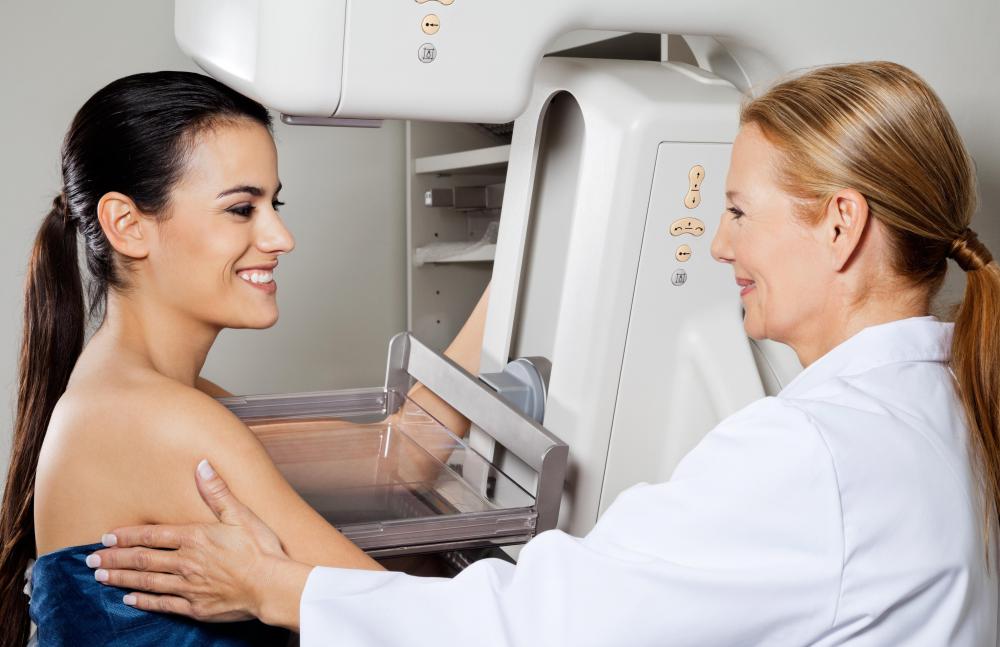At TheHealthBoard, we're committed to delivering accurate, trustworthy information. Our expert-authored content is rigorously fact-checked and sourced from credible authorities. Discover how we uphold the highest standards in providing you with reliable knowledge.
What are the Different Types of Breast Disease?
A number of diseases can involve the breasts. When people think of breast disease, they often visualize breast cancer, but a wide variety of other disorders can appear in the breasts, and breast disease is not limited to women. Due to concerns about cancer, many people seek treatment for breast disease since they fear that it might be an early sign of cancer; it is not uncommon for people to find lumps in their breasts which are totally benign or noncancerous.
Mammary dysplasia is an umbrella term for breast diseases which involve benign changes to the breasts. Fibrocystic breast disease is an example of a condition which falls under this umbrella. Women with fibrocystic breast disease experience changes in their breasts which tend to follow the menstrual cycle, including the development of lumps, soreness, and tenderness. Fibroadenomas are benign tumors which appear as lumps in the breast, and women can also develop breast hyperplasia, in which cells start to multiply more quickly than normal. Hyperplasia is not necessarily malignant; only a pathology exam of the cells can determine how dangerous it may be.

Some other examples of breast disease include galactorrhea, in which people who are not pregnant or breastfeeding start to produce milk, and more general nipple discharge, which can occur alone or in association with another condition. In patients with sclerosing adenosis, benign growths appear in the lobules of the breast, while people with intraductal papilloma develop small benign nodules in the ducts of the breast. Menopausal women can develop a type of breast disease known as mammary duct ectasia, in which the ducts of the breast are blocked.

Breast cancer is an example of a malignant form of breast disease. Another malignant condition is Paget's disease of the breast, in which malignant cells begin to grow in the nipple. This condition can appear as a precursor to breast cancer, or as a standalone condition. Women can also develop mastitis, an infection in the breast, and fat necrosis, a condition most common in women with large breasts in which breast tissue becomes damaged and starts to die. Another type of breast disease is a breast cyst, a small, fluid-filled sac in the breast.
Congenital abnormalities are not necessarily treated as diseases, but can cause symptoms which may mimic or obscure the signs of breast disease. Some people, for example, have inverted or misshapen nipples, and others have extra nipples or breasts.

Concern about cancers has raised awareness about the need for breast self exams, in which people examine their breasts on a monthly basis for any signs of changes. It is important to see a doctor if lumps or abnormalities are felt, or if a breast changes shape, to determine what is causing the abnormality and to treat it, if necessary.
AS FEATURED ON:
AS FEATURED ON:

















Discussion Comments
Mastitis is most often found in new mothers, usually nursing mothers. It can be very painful. My mom said she had it after my sister was born. She used warm compresses to help, and also said that making sure she emptied her breasts after nursing helped, too.
She said doctors will often use antibiotics to help the situation now, and they are pretty effective. My mom also said women who aren’t nursing can get it, but it’s not nearly as common. That’s one of those things I don’t ever want to have. Mom said it was very, very painful, and I’d just as soon skip it altogether!
I have fibrocystic breast disease. It's usually hereditary. My mom has it and so did my grandmother. It's rarely a problem, and since the same radiologist usually reads my mammograms, he knows what to expect, and can and does compare my readings from the year before if he sees anything.
It's not painful, and the only time I know I have it is when I've been drinking too much caffeine and I'll have a little pea-sized lump raise up on the right side. When I cut down on the caffeine, the lump disappears. Go figure.
I do monthly breast exams and have a yearly mammogram, so I stay on top of any possible changes.
Post your comments